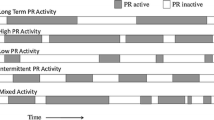Abstract
In recent days there the farmers who are having enormous expanses of land are facing heavy loss due to sudden changes like monsoon and presence of high amount of CO2. Therefore, this article presents a Cognitive Radio (CR) model for implementing in agricultural field to predict the parameters like CO2 effect and strength of received signal. In order to monitor these parameters a new fanged technique with low cost implementation is necessary. Therefore, a low cost Effective CR Agricultural model has been incorporated by integrating the algorithms in two folds. The proposed method has the advantage that the strength of received signal will be higher even if the distance is too long. In addition the effect of CO2 will also be reduced. The projected technique is compared with other existing techniques where, the implementation cost is much lesser and also the CR model proves to be a precise technique for agricultural applications.







Similar content being viewed by others
References
Howell, T. A. (1996). Irrigation scheduling research and its impact on water use. In American Society of Agricultural Engineers, Proceeding (Nov. 3–6) (pp. 21–33).
Coates, R. W., & Delwiche, M. J. (2009). W m n i c s, 52(3), 971–981.
Scholar-vlsi, M. T., & Gyan, S. (2014). WSN application: intelligent drip irrigation system through moisture and temperature sensors international. Journal of Scientific Research Engineering & Technology, 3(9), 1276–1281.
Salam, A., & Salam, A. (2019). A cooperative overlay approach at the physical layer of cognitive radio for digital agriculture a cooperative overlay approach at the physical layer of cognitive radio for digital agriculture.
Hussain, M. R., Sahgal, D. R. J. L., & Gangwar, A. (2013). Control of irrigation automatically by using wireless sensor network. International Journal of Soft Computing & Engineering 3(1), 324.
Tan Lam, P., Le Quang, T., Le Nguyen, N., & Dat Nguyen, S. (2018). Wireless sensing modules for rural monitoring and precision agriculture applications. Journal of Information and Telecommunication, 2(1), 107–123. https://doi.org/10.1080/24751839.2017.1390653.
Cardenas-Lailhacar, B., & Dukes, M. D. (2008). Expanding disk rain sensor performance and potential irrigation water savings. Journal of Irrigation and Drainage Engineering, 134(1), 67–73. https://doi.org/10.1061/(ASCE)0733-9437(2008)134:1(67).
Coates, R. W., Delwiche, M. J., Broad, A., & Holler, M. (2013). Wireless sensor network with irrigation valve control. Computers and Electronics in Agriculture, 96, 13–22. https://doi.org/10.1016/j.compag.2013.04.013.
Nayse, S. (1980). Cognitive radio in precision agriculture.
Dursun, M., & Ozden, S. (2011). A wireless application of drip irrigation automation supported by soil moisture sensors. Scientific Research and Essays, 6(7), 1573–1582. https://doi.org/10.5897/SRE10.949.
Fazackerley, S., & Lawrence, R. (2010). Reducing turfgrass water consumption using sensor nodes and an adaptive irrigation controller. In 2010 IEEE sensors applications symposium, SAS 2010—Proceedings (pp. 90–94). https://doi.org/10.1109/SAS.2010.5439386.
Fereres, E., & Soriano, M. A. (2007). Deficit irrigation for reducing agricultural water use. Journal of Experimental Botany, 58(2), 147–159. https://doi.org/10.1093/jxb/erl165.
Haldar, K. L., Agrawal, D. P., & Das, S. (2013). Cost minimizing inter-sensing duration in cognitive radio networks. In 2013 IEEE 14th international symposium on a world of wireless, mobile and multimedia networks, WoWMoM 2013. https://doi.org/10.1109/WoWMoM.2013.6583457.
Liang, Y. C., Chen, K. C., Li, G. Y., & Mähönen, P. (2011). Cognitive radio networking and communications: An overview. IEEE Transactions on Vehicular Technology, 60(7), 3386–3407. https://doi.org/10.1109/TVT.2011.2158673.
Naeem, M., Pareek, U., Lee, D. C., & Anpalagan, A. (2013). Estimation of distribution algorithm for resource allocation in green cooperative cognitive radio sensor networks. Sensors (Switzerland), 13(4), 4884–4905. https://doi.org/10.3390/s130404884.
Grogan, A. (2012). Smart farming. Engineering and Technology, 7(6), 38–40. https://doi.org/10.1049/et.2012.0601.
Upadhyay, A., & Maurya, S. K. (2020). Protecting the agriculture field by IoT application. In 2020 international conference on power electronics and IoT applications in renewable energy and its control, PARC 2020 (pp.411–414).https://doi.org/10.1109/PARC49193.2020.236640.
Farooq, M. S., Riaz, S., Abid, A., Umer, T., & Zikria, Y. B. (2020). Role of IOT technology in agriculture: A systematic literature review. Electronics (Switzerland). https://doi.org/10.3390/electronics9020319.
Khanna, A., & Kaur, S. (2020). Internet of Things (IoT), applications and challenges: A comprehensive review. Wireless Personal Communications (Vol. 114). Springer. https://doi.org/10.1007/s11277-020-07446-4.
Author information
Authors and Affiliations
Corresponding author
Additional information
Publisher's Note
Springer Nature remains neutral with regard to jurisdictional claims in published maps and institutional affiliations.
Rights and permissions
About this article
Cite this article
Teekaraman, Y., Manoharan, H. Implementation of Cognitive Radio Model for Agricultural Applications Using Hybrid Algorithms. Wireless Pers Commun 127, 505–522 (2022). https://doi.org/10.1007/s11277-021-08279-5
Accepted:
Published:
Issue Date:
DOI: https://doi.org/10.1007/s11277-021-08279-5




